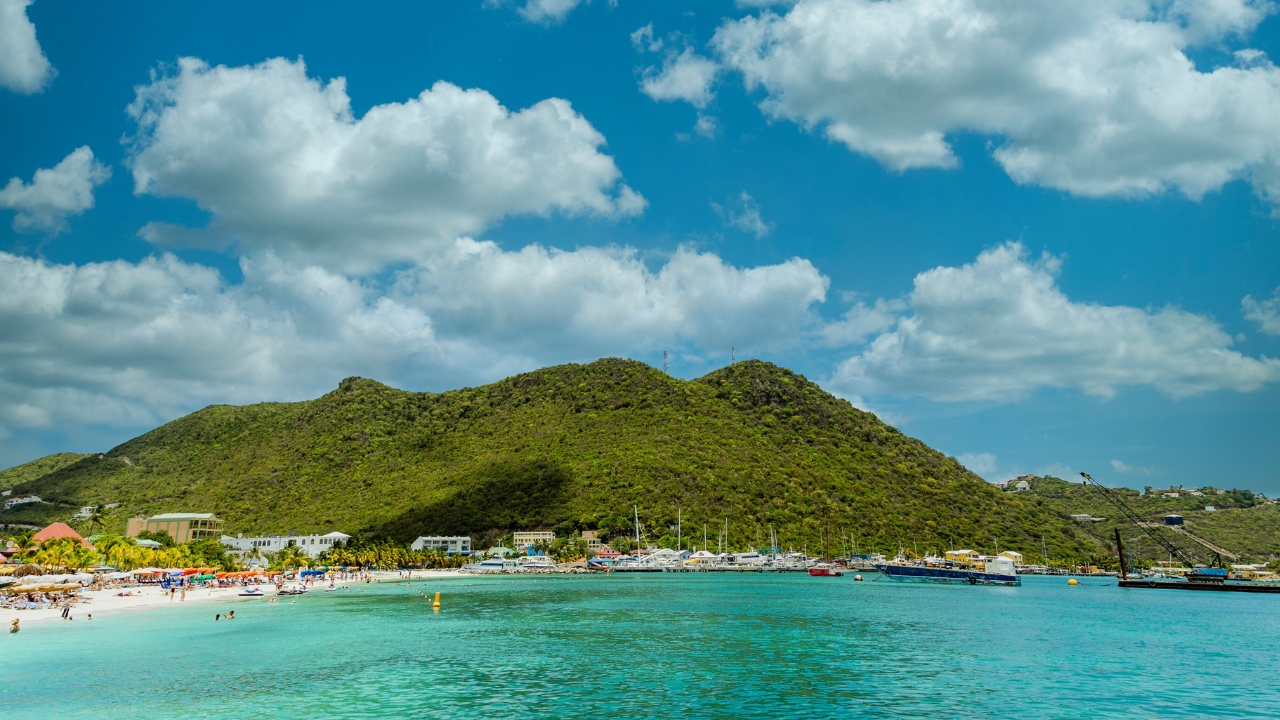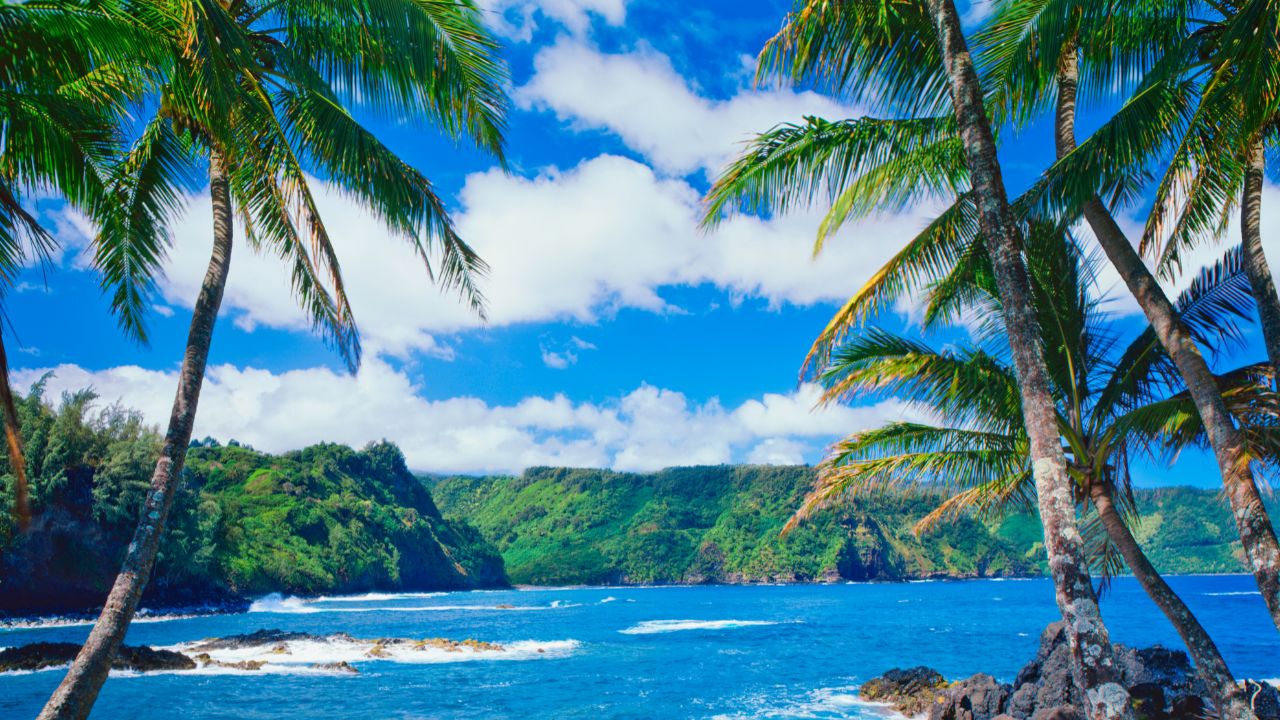When it comes to travel, few places on Earth captivate the soul like Hawaii. Its lush landscapes, azure waters, and vibrant culture make it a dream destination for adventurers and relaxation seekers.
Environmentally conscious travel in Hawaii promotes sustainable practices for protecting natural beauty and preserving the delicate ecosystem of the islands. Eco-friendly travel allows visitors to enjoy breathtaking landscapes. It involves actions like reducing carbon footprints, supporting local communities, and respecting cultural heritage to minimize their impact on the environment.
Travelers in Hawaii can make a positive impact by exploring parks, opting for eco-certified stays, and engaging in community-based tourism. By prioritizing sustainable choices and being mindful of their actions, Visitors can cherish Hawaii’s beauty and aid its preservation.
In this article, we’ll embark on a journey of eco-conscious exploration as we uncover the beauty of “Traveling Green” in Hawaii. Join us as we delve into sustainable tourism tips in Hawaii that not only enrich your experience but also preserve the natural wonders for generations to come.
Hawaii’s Unique Environment
When it comes to sustainable tourism, Hawaii stands out as a destination that offers breathtaking beauty and diverse ecosystems. From stunning beaches and lush rainforests to active volcanoes and vibrant coral reefs, the islands of Hawaii host a wide range of natural wonders.
It is crucial to understand and appreciate the unique environment of Hawaii and work towards preserving its natural beauty for future generations. In this section, we will explore the description of Hawaii’s diverse ecosystems and the importance of preserving its delicate balance.
Description of Hawaii’s Diverse Ecosystems
- The Hawaiian islands are home to a remarkable variety of ecosystems, thanks to their isolated location in the middle of the pacific ocean. Each island has its own distinct environment, making Hawaii a true paradise for nature enthusiasts.
- The islands boast stunning beaches with powdery white sand and crystal-clear turquoise waters, attracting visitors from all over the world. These coastal areas provide a habitat for numerous marine species and serve as nesting grounds for endangered sea turtles and seabirds.
- As you venture inland, you’ll discover lush rainforests filled with tropical flora and fauna. These verdant forests are teeming with life, including rare native birds, insects, and plants found nowhere else on Earth. The sight and sounds of Hawaii’s rainforests are a true delight for the senses.
- Perhaps one of the most iconic elements of Hawaii’s environment is its active volcanoes. The big island, in particular, is home to Kilauea, one of the world’s most active volcanoes. It’s a sight to behold as hot molten lava cascades down the slopes, shaping the land and creating new formations year after year.
- Lastly, the surrounding ocean holds an immense underwater world. Hawaii’s coral reefs are renowned for their vibrant colors and teeming marine life. Snorkeling or diving in these waters offers an up-close and personal encounter with turtles, dolphins, manta rays, and an array of colorful tropical fish.
The Importance of Preserving Hawaii’s Natural Beauty
- Hawaii’s natural beauty and unique environment are not only a source of awe and wonder, but they also play a vital role in the island’s delicate ecosystem and local communities.
- Preserving Hawaii’s natural beauty ensures the sustainability of wildlife populations and the protection of endangered species. By maintaining the balance of ecosystems, we safeguard the habitats and food sources that support these remarkable creatures.
- The environment also provides countless opportunities for ecotourism, which is essential to Hawaii’s economy. By protecting the natural wonders that draw visitors, we can continue to enjoy the economic benefits that sustainable tourism brings.
- Additionally, preserving Hawaii’s environment contributes to the fight against climate change. The islands are particularly vulnerable to rising sea levels, extreme weather events, and the loss of biodiversity. Conserving natural resources and reducing our ecological footprint is crucial to safeguarding Hawaii’s future.
- By adopting sustainable travel practices such as using reef-safe sunscreen, respecting wildlife, and supporting local conservation initiatives, we can all contribute to the preservation of Hawaii’s natural beauty and ensure that this paradise remains a haven for generations to come.
Environmental Challenges in Hawaii
Hawaii is a renowned travel destination, attracting millions of visitors each year. However, its popularity comes with a price. As an environmentally conscious traveler, it is important to be aware of the environmental challenges faced by this beautiful island paradise.
Let’s explore some of the key challenges and their impact on Hawaii’s delicate ecosystem.
Over-Tourism And Its Impact on The Environment:
- The increasing number of tourists in Hawaii has led to over-tourism, particularly in popular areas such as Waikiki and Maui.
- Over-tourism puts immense pressure on natural resources, infrastructure, and local communities.
- It contributes to the degradation of the environment, including pollution, erosion, and loss of biodiversity.
- The strain on infrastructure and resources makes it difficult for Hawaii to maintain a sustainable balance between tourism and conservation efforts.
Threats To Marine Life And Coral Reefs:
- Hawaii is home to diverse marine life and vibrant coral reefs, but they are under threat due to human activities.
- Pollution from sunscreen chemicals, plastic waste, and runoff from coastal development pose a significant risk to marine ecosystems.
- Overfishing, destructive fishing practices, and climate change also contribute to the depletion of fish stocks and coral bleaching.
- Protecting and preserving Hawaii’s marine life and coral reefs is crucial for the long-term survival of these fragile ecosystems.
Water Scarcity And Conservation Efforts:
- Hawaii’s islands have limited freshwater resources, making water scarcity a pressing issue.
- High water demand from tourism, agriculture, and residential consumption puts a strain on the available water supply.
- Conservation efforts, such as water-saving initiatives and the use of reclaimed water for irrigation, are being implemented to mitigate water scarcity.
- Raising awareness among locals and visitors about water conservation practices is essential in ensuring the sustainable use of this precious resource.
By understanding these environmental challenges, we can make conscious choices to minimize our impact while enjoying the beauty of Hawaii. Let’s explore ways to engage in environmentally friendly travel and contribute to the preservation of this island paradise.
Sustainable Accommodation Options
Hawaii is a tropical paradise known for its stunning landscapes, crystal-clear waters, and vibrant culture. As travelers, it is important for us to ensure that we are nurturing and protecting the natural beauty that makes Hawaii so special. One way to do this is by choosing sustainable accommodation options that minimize our impact on the environment.
In this section, we will explore eco-friendly resorts and hotels in Hawaii, the sustainable practices they employ, and the benefits of choosing such accommodations.
Eco-Friendly Resorts And Hotels
- Many resorts and hotels in Hawaii are committed to sustainable practices and have made conscious efforts to reduce their carbon footprint.
- These accommodations prioritize the use of renewable energy sources, such as solar or wind power, to minimize reliance on fossil fuels.
- Eco-friendly resorts and hotels often incorporate sustainable design and construction practices, using locally sourced materials and implementing energy-efficient systems.
- Some accommodations even offer eco-friendly amenities, such as organic toiletries and linens made from sustainable materials.
Sustainable Practices Employed By Accommodations
- To further their commitment to sustainability, accommodations in Hawaii often implement water-saving measures, such as low-flow toilets and showers, as well as investing in efficient irrigation systems for their gardens.
- Recycling programs are commonly in place to reduce waste, and some establishments even compost food scraps to minimize landfill contributions.
- Many resorts and hotels prioritize supporting local communities by sourcing food from local farmers and using locally made products.
- To protect Hawaii’s fragile ecosystems, accommodations may offer educational programs and activities that promote conservation and environmental awareness.
Benefits Of Choosing Sustainable Accommodation
- By choosing sustainable accommodation, travelers can actively contribute to the preservation of Hawaii’s natural beauty and the well-being of local communities.
- Sustainable accommodations often provide a more authentic and immersive experience, allowing guests to connect with the local environment and culture.
- Staying in eco-friendly resorts and hotels can inspire a sense of well-being and create peace of mind knowing that you are minimizing your impact on the environment.
- Many sustainable accommodations are also committed to promoting other sustainable practices, such as responsible tourism and supporting local businesses, enhancing the overall sustainability of your trip.
When planning a trip to Hawaii, consider the impact your accommodation choice can have on the environment. By choosing eco-friendly resorts and hotels that employ sustainable practices, you can enjoy a memorable vacation while contributing to the preservation of Hawaii’s natural beauty for future generations.
Eco-Tourism Activities In Hawaii
Hawai’i is a paradise for nature lovers, with its stunning landscapes, vibrant marine life, and commitment to environmental conservation. If you are planning a trip to the islands and want to make a positive impact on the environment, participating in eco-tourism activities is a great way to do so.
From hiking in Hawaii’s national parks to snorkeling and scuba diving responsibly, there are plenty of opportunities to engage with the natural world while minimizing your ecological footprint. Additionally, volunteering for environmental conservation projects allows you to give back to the communities and ecosystems that make the islands so special.
Let’s explore some of these eco-friendly activities in detail.
Hiking In Hawaii’S National Parks:
- Explore the diverse ecosystems of Hawai’i by going on a hike in one of its national parks.
- From the lush rainforests of Haleakalā National Park to the volcanic landscapes of Hawai’i volcanoes national park, there are numerous trails catering to different fitness levels and interests.
- Immerse yourself in the breathtaking vistas, encounter unique flora and fauna, and learn about the cultural and geological history of the islands.
Snorkeling And Scuba Diving Responsibly:
- Hawai’i boasts some of the world’s most breathtaking coral reefs and marine life, making it a prime destination for snorkeling and scuba diving.
- Choose operators that follow sustainable practices, such as respecting marine life, avoiding damage to coral reefs, and distributing sunscreen alternatives that do not harm the environment.
- By being mindful of your impact on these delicate ecosystems, you can enjoy the beauty of the underwater world while helping to preserve it for future generations.
Volunteering For Environmental Conservation Projects:
- Give back to the islands and contribute to their preservation by participating in environmental conservation projects.
- Join beach clean-ups and help remove marine debris to protect sea turtles, birds, and other marine life.
- Plant native trees and participate in reforestation initiatives to restore habitats and combat climate change.
- Educate yourself and others about the importance of environmental conservation through community outreach programs.
Embarking on eco-tourism activities in Hawai’i allows you to admire the natural beauty of the islands while minimizing your ecological impact. By hiking in national parks, snorkeling and scuba diving responsibly, and volunteering for environmental conservation projects, you become a steward of the environment and contribute to the sustainability of these pristine ecosystems.
So, get ready to immerse yourself in the wonders of Hawaii’s natural world and make lasting memories while helping to preserve its beauty for future generations.
Local Community Involvement
Hawaii is not only known for its stunning natural beauty but also for its strong sense of community. When it comes to sustainable tourism in Hawaii, engaging with the local community is essential. By supporting local businesses, embracing Hawaiian culture and traditions, and participating in community-based conservation initiatives, travelers can make a positive impact on the environment and foster a deeper connection with the islands.
Supporting Local Businesses
- Patronizing locally-owned hotels, restaurants, and shops helps to stimulate the local economy and preserve the unique character of each community.
- By choosing locally-sourced products and services, travelers can reduce their carbon footprint and contribute to sustainable practices.
- Local businesses often have a deep understanding of the island’s ecosystems and can provide valuable insights and recommendations for eco-friendly activities.
Engaging With Hawaiian Culture And Traditions
- Immerse yourself in the rich heritage of Hawaii by attending traditional ceremonies, such as a luau or a hula performance.
- Learn about the significance of native plants and animals through interactive cultural activities and workshops.
- Support local artisans by purchasing handmade crafts and souvenirs that showcase traditional Hawaiian craftsmanship.
Participating In Community-Based Conservation Initiatives
- Join community-led beach cleanups to help preserve Hawaii’s pristine coastline and protect marine life.
- Volunteer with organizations that focus on restoring native habitats or protecting endangered species.
- Learn about traditional land stewardship practices, such as Ahupua’a, and how they can help to maintain the ecological balance of the islands.
By actively engaging with the local community, travelers can play a vital role in preserving the fragile ecosystem of Hawaii. Supporting local businesses, immersing oneself in Hawaiian culture and traditions, and participating in community-based conservation initiatives allow for a more sustainable and authentic travel experience.
Let’s embrace the spirit of aloha and make a positive impact on the environment as we explore the beauty of the Hawaiian islands.
Transportation And Carbon Footprint Reduction
As travelers become more conscious of their impact on the environment, sustainable and environmentally friendly travel options are gaining popularity. When it comes to exploring the pristine beauty of Hawaii, it is important to choose transportation methods that minimize your carbon footprint.
In this section, we will explore some key points on how to make responsible choices for transportation while reducing your carbon emissions.
Choosing Sustainable Transportation Options
- Opt for public transportation: Hawaii offers an extensive network of buses that can take you to various destinations on the islands. By utilizing public transportation, you can reduce the number of vehicles on the road and, ultimately, decrease carbon emissions.
- Share rides with others: Carpooling or ride-sharing services are efficient ways to explore Hawaii while reducing your environmental impact. By sharing a vehicle with other travelers or locals, you not only save money but also reduce the number of cars on the road, leading to a decrease in carbon emissions.
- Rent hybrid or electric vehicles: If you prefer driving, consider renting a hybrid or electric vehicle. These eco-friendly options emit fewer greenhouse gases and contribute less to air pollution compared to traditional gasoline-powered cars.
- Embrace active transportation: One of the best ways to reduce your carbon footprint is by embracing active transportation methods. Explore Hawaii’s beautiful landscapes by hiking, biking, or walking whenever possible. Not only will you lower your carbon emissions, but you will also immerse yourself in the natural beauty of the islands.
By choosing sustainable transportation options, you can contribute to the preservation of Hawaii’s breathtaking environment while enjoying your travel experience. Let’s dive deeper into how you can minimize your carbon emissions while exploring the islands.
Sustainable Dining In Hawaii
Hawaii is not only renowned for its stunning landscapes and vibrant culture but is also a pioneer in sustainable tourism practices. With a focus on preserving the beautiful environment and supporting the local community, sustainable dining options in Hawaii have gained prominence.
From farm-to-table restaurants to promoting seafood sustainability and highlighting local and organic food options, there are many ways to enjoy a guilt-free dining experience in paradise.
Farm-To-Table Restaurants And Sustainable Food Practices
- Farm-to-table restaurants are a cornerstone of sustainable dining in Hawaii, offering a direct connection between the farm and the plate.
- By sourcing local, seasonal ingredients, these establishments minimize the carbon footprint associated with long-distance food transportation.
- Supporting local farmers not only helps the local economy but also ensures fresher and more flavorful dishes for diners.
- Sustainable food practices, such as composting food waste and using eco-friendly packaging, are common among farm-to-table restaurants.
- The emphasis on transparency allows diners to understand where their food comes from and how it is produced, fostering a deeper appreciation for the culinary experience.
Awareness of Seafood Sustainability
- Hawaii’s commitment to seafood sustainability is evident in the widespread awareness of responsible fishing practices.
- Restaurants and seafood markets often display labels indicating sustainable seafood options, making it easier for consumers to make environmentally conscious choices.
- The use of locally caught fish helps reduce the demand for imported seafood and supports local fishermen.
- Awareness campaigns and educational initiatives educate both locals and visitors about the importance of protecting marine ecosystems and endangered species.
- By choosing seafood responsibly, visitors can enjoy the wonderful flavors of Hawaii’s ocean bounty while contributing to the preservation of the delicate aquatic ecosystem.
Promoting Local And Organic Food Options
- Hawaii’s commitment to sustainable dining extends beyond seafood to include a wide range of local and organic food options.
- Many restaurants feature menus that celebrate the island’s diverse agricultural heritage, highlighting traditional and culturally significant ingredients.
- Supporting local farmers and producers ensures that the food is not only fresh and delicious but also minimizes the environmental impact associated with long-distance food transportation.
- By promoting organic farming practices, Hawaii is leading the way in sustainable agriculture and encourages visitors to make healthier choices.
- Embracing local and organic food options provides a unique opportunity for visitors to experience the true flavors of the islands while also nourishing their bodies with wholesome and sustainable ingredients.
In Hawaii, sustainable dining is not just a trend, but a way of life. By embracing farm-to-table restaurants, promoting seafood sustainability, and highlighting local and organic food options, visitors can savor the delicious flavors of Hawaii while respecting and protecting its precious environment.
Responsible Wildlife Encounters
Hawaii is not only known for its stunning landscapes and welcoming locals but also for its commitment to sustainable travel. If you’re planning a trip to the islands, it’s important to be aware of how your activities can impact the environment.
One aspect of sustainable tourism is responsible wildlife encounters. By following guidelines for observing marine wildlife, minimizing disturbance to native species, and supporting organizations protecting Hawaii’s endangered species, you can ensure that your trip to Hawaii is both memorable and environmentally friendly.
Guidelines For Observing Marine Wildlife:
- Maintain a safe distance: Keep a distance of at least 100 yards (91 meters) from marine mammals, such as dolphins, seals, and whales. This allows them to carry out their natural behaviors without feeling threatened.
- Use binoculars: If you want to get a closer look at marine wildlife, opt for binoculars instead of approaching them closely. This way, you can observe them without disrupting their natural habitat.
- Do not feed or touch marine wildlife: Feeding marine animals can disrupt their natural feeding patterns and overall health. Likewise, touching them can be stressful for the animals and may transmit diseases. Appreciate them from a respectful distance.
Minimizing Disturbance To Native Species:
- Stay on designated trails: When exploring Hawaii’s beautiful landscapes, stick to designated trails to avoid trampling on delicate plant and animal habitats. This helps preserve the natural ecosystem and minimize disturbance.
- Do not remove anything from the environment: Whether it’s shells, rocks, or plants, leave everything as you found it. Taking natural mementos may disrupt the balance of Hawaii’s ecosystems and harm native species.
- Dispose of waste properly: Always pack out what you pack in. Dispose of your waste in designated bins or facilities to prevent pollution and protect the environment.
Supporting Organizations Protecting Hawaii’S Endangered Species:
- Volunteer: Consider volunteering with local organizations involved in conservation efforts. By dedicating your time and skills, you can actively contribute to protecting Hawaii’s endangered species and their habitats.
- Donate: Support nonprofit organizations that focus on wildlife conservation in Hawaii. Your financial contributions can go a long way in funding research, habitat restoration, and educational initiatives.
- Choose responsible tour operators: When booking wildlife-related tours, opt for operators that have a strong commitment to sustainability and wildlife conservation. These operators prioritize the well-being of the animals and work towards minimizing their impact on the environment.
By adhering to these guidelines and supporting initiatives aimed at protecting Hawaii’s wildlife, you can enjoy responsible wildlife encounters during your Hawaiian vacation. Embrace the opportunity to connect with nature while leaving a positive impact on the environment.
Final Words
Hawaii is not only a paradise for sun-seekers and adventure enthusiasts, but it also offers ample opportunities for environmentally conscious travelers to make a positive impact. By practicing sustainable tourism, visitors can help protect Hawaii’s fragile ecosystems and preserve its natural beauty for future generations.
From choosing eco-friendly accommodations to participating in local conservation initiatives, there are various ways to tread lightly on the islands. Engaging in responsible hiking and snorkeling, supporting local farmers’ markets, and using public transportation or bicycles are simple yet effective ways to reduce one’s carbon footprint.
Furthermore, being respectful of the local culture and traditions is crucial in maintaining a healthy environment. By following these eco-friendly practices, travelers can enjoy the best of Hawaii while playing their part in creating a sustainable future. So, pack your bags and embark on sustainable tourism in Hawaii, where stunning landscapes and conservation efforts go hand in hand.





[…] Hawaii’s love for the environment extends to the green. These 10 sustainable courses prove golf and eco-consciousness can coexist. From water conservation to native plants, they’re leading the way. […]